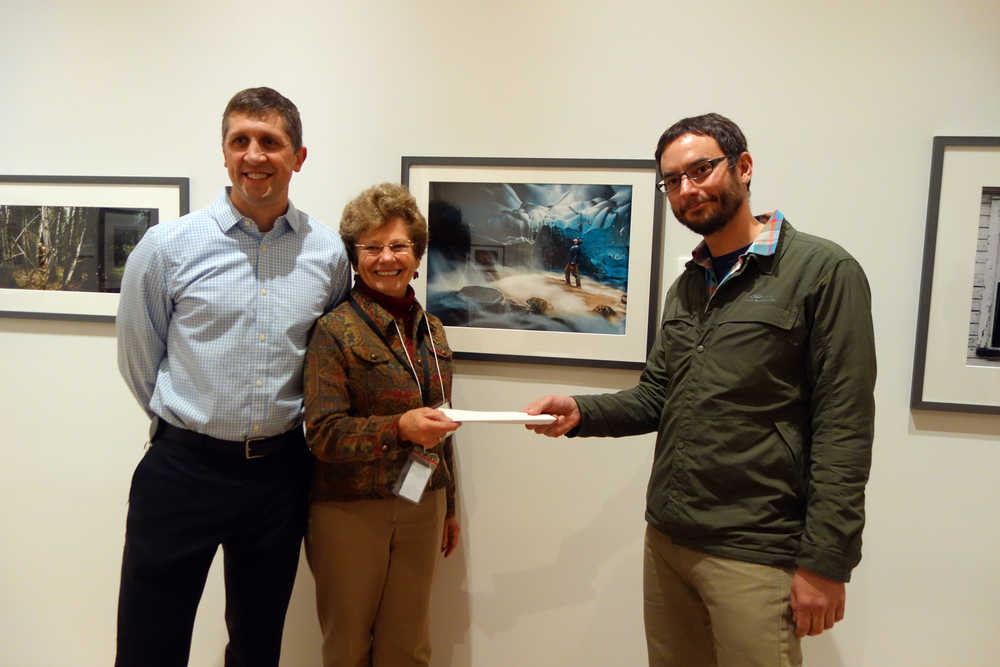It was a subject close to home that won Chris Miller the Juror’s Choice Award at this year’s Alaska Positive show — a now classic view of the Mendenhall Glacier’s ice caves. But the work he’ll be discussing at his Dec. 15 lecture and showing at the Rookery next month took him a little further afield.
His lecture will cover his work documenting commercial fisheries in Alaska
“I’ll probably cover some of the more obscure fisheries,” he said, like the commercial king crab fishing being done off the ice in Nome.
“They use the snowmachines to lift the pots. It was really neat, it was different,” he said. He’s also thinking of including trolling, longlining for cod and opilio crab fishing in the Bering Sea in the lecture.
Miller himself is a commercial fisherman who has worked in Bristol Bay for the past ten years.
“I’m really lucky the boat that I fish on the guys are really supportive” of his photography, he said. “So they allow me to kind of duck away for a moment or two to grab my camera and take a couple pictures and then put it away and go back to work.”
In 2014 and 2015, he also got the chance to shoot commercial fisheries in the Brittany region of France, which provides a nice counterpoint to his Alaska work.
The most obvious difference is that they were day fisheries, Miller said. “They usually only fish a few days a week, depends on the season.”
There were differences too in the management of the resource, like the lack of species and gender restrictions.
But there were similiarities, too. Miller worked on the small islands of Houat, Hoëdic and Belle-Île.
“One of the islands, there was maybe 20 fishermen living on the island and maybe just a couple hundred people in total,” he said. They faced similar problems to smaller Southeast communities.
“One of the island Hoëdic, the children population was going down enough that they were considering having to close the school just like they had to do in Tenakee,” Miller said. (Tenakee’s school is now open again.)
The Rookery will display a different side of Miller’s work. One wall will contain skiing and snowboarding photos he takes during the winter. The other wall will show photos from a trip to Japan where he was able to capture the tuna auction at the Tsukiji fish market in Tokyo, the largest open air fishmarket in the world, and from the Canadian Arctic where he went on assignment for the New York Times.
Miller described his process as sketching. On a weeklong shoot, he can take between 6,000 and 8,000 photos allowing him “to work through an idea fully,” he said.
“If I’m, say, photographing fishermen taking fish out of the net, usually as I initially approach it the light won’t be right or the position of the fishermen or the size of the fish or whatever it is,” he said. “There will be multiple elements I’m trying to get in one shot.”
Fishing, because it’s repetitive, allows him to return to same scene and work out different angles and aspects until he finally gets the shot he wants, whereas in skiing or snowboarding, “the conditions are only right for just that one moment so I kind of have to be,” he said.

